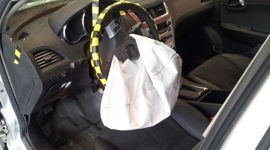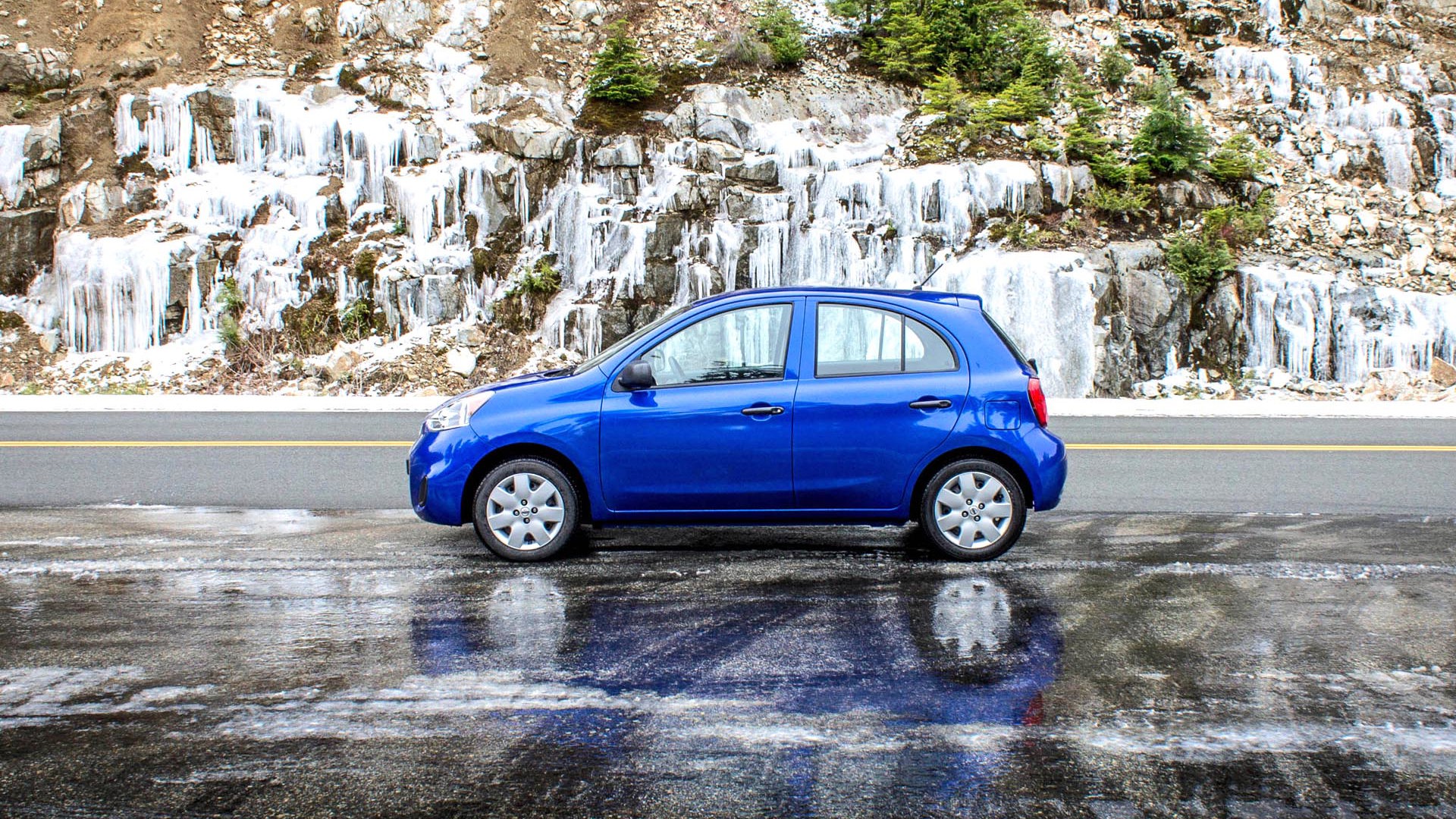I wonder if my dad ever got tired of hearing about the Nissan 300ZX.
When I was younger, my parents owned a small business – and dad and I would regularly go on long drives to visit suppliers. My most vivid memories of those drives were the hours that dad and I would spend gabbing about cars. New cars. High-tech cars. Things that cars could do these days. Cars that were coming. Cars like the Nissan 300ZX.
This was the late eighties and early nineties – years before I’d get my driver’s licence.
The 300ZX was a special part of my childhood. It stoked the fire in my rapidly forming gearhead brain with specs and facts and figures that I’d memorize from car magazines of the pre-internet day, storing them away for discussion with dad on our drives in the family Dodge Caravan (a 1987 affectionately nicknamed Tugboat).
The literature read like a car enthusiast’s Christmas wishlist: 300ZX was one of those modern Japanese performance cars that ran radical and nearly experimental (for the time) technology. Reading about that always sucked me in.
I was a geek for this stuff. Still am. Dad, too.
In the rare quiet moments on our drives, I’d imagine we were in a 300ZX – even quietly humming the sound of its revving engine under my breath, so dad wouldn’t hear.
Dad says he did hear me humming, though.
He says he never grew tired of my constant barrage of “DID YOU KNOW” facts and figures about the 300ZX’s mighty twin-turbo engine, 16-bit engine computer, four-wheel steering, or adjustable suspension which allowed drivers to do the virtually unheard-of: toggling the suspension at the flip of a switch.
The 300ZX was my gateway car-guy car. There was one in the town I grew up in, and I used to follow it around on my bike, just to hear it start up and watch it move down the road.

Fast-forward to a soggy mid-October week earlier this year.
A rare opportunity to spend a week with a very special 1996 300ZX Twin Turbo had materialized. This machine was so new that, by modern-car standards, it wouldn’t have even seen its first oil change. No modifications, all original, and an odometer that read, simply, “6,104” when we met.
Two decades after it was built, and after your writer had driven (literally) hundreds of other cars since the 300ZX left the market when I was a teenager, this machine hit me hard, once again. On approach in the parking lot, keys in hand, a horde of butterflies took up residence in my midsection. It was a serious flash of nervousness that left me lightheaded.
I’d never driven one of these, despite often imagining I had. Hell, I’d only ever been this close to a 300ZX a handful of times. Now, standing here, keys in hand, I’m facing a priceless, rolling relic of my car-guy childhood – and the sheet-metal source of countless memories. On some level, I’m second-guessing the 1,200 kilometres or so that I’m about to add to the machine’s nearly empty odometer.

It’s the look of the 300ZX, to this day, that still takes me back. It’s still radical. Still stands out. Still looks like a real-life Hot Wheels car driving down the road. As wedge-y and angular and stark – pure nineties cool – as anything comparable, it also managed to do its own thing, and be unmistakable as almost anything other than what it was.
The rear of the car has a white decal, advertising “TWIN TURBO”. Another nervous pang. I used to run up and look for this decal if I ever saw a 300ZX in a parking lot, or parked on the side of a downtown street.
If present, I’d yell for dad, as if trying to kick off a celebration.
“Dad! Dad! THIS ONE’S TWIN TURBO!” I’d scream from across the road. In this situation, dad said he’d often wonder if my eyeballs would explode from their sockets. No two words were more magical to 12-year-old me.

The pedestal spoiler. The sharp-edged nosecone. The dark gloss panel from behind which the colorful tail lighting was exposed, almost replicating the design of the control consoles in the USS Enterprise, which was popular on TV at the time. I always wondered if Star Trek: The Next Generation and the 300ZX had some unique style connection, perhaps via a designer who was also a Trekkie. Both occupied the same era, and both nodded towards an unexplored high-tech future, after all.
Another futuristic flashback: the way the ZX’s main controls are embedded into the sides of the instrument cluster cowl. Climate controls, wipers, lighting, and more were all relegated to these little pods that sprouted out next to the instruments. The climate control even had a little embedded LCD display, which beeps in response to being clicked and lights up various illuminated segments to visualize your selection. Imagine how high-tech this looked, and felt, in its day?
And bam – there I was: fourteen again.

If you bought the big one, like this particular unit (which sold for about $55,000), you got a 3.0-litre twin turbo V6 with 300 horsepower, and nearly as much torque. Rear-wheel drive, all-wheel steering, and a four-speed automatic (with click-for-overdrive!) were included. There was a five-speed manual available, though my test unit ran two pedals, not three.
The 300XZ fires up via a surprisingly-quick starter motor, emitting a deep and mellow hum that’s louder than expected for something running factory exhaust. It’s an easy thing to drive around town: steering is light enough, outward visibility ahead isn’t bad by sports-car standards, and the engine is responsive enough at low revs and light throttle inputs to whiz through traffic with little second thought.
Parking was a bit of a chore – it’s tricky to see the rear corners of the car as you reverse into a space. Further, upon nearly being backed into by a Silverado at Costco, I realized why modern cars did away with small, specific buttons for sounding the horn: my panic reaction of smashing the centre of the steering wheel to honk an alert was met with silence, since the ZX’s horn is sounded by thumbing one of two quarter-sized hard buttons. Thankfully, said Silverado noticed the ZX at the last moment, and no paint was swapped.

Drive hard, and the four-speed automatic shifts with a smoothly muted thud through the driveline. These aren’t the invisibly smooth upshifts we see today, but they’re as quick as was possible, and fairly refined.
Turbo lag is interesting: present in the sense that heavy throttle inputs see acceleration swell up over a period of time, rather than arriving all at once. But the blending of pre- and post-turbocharger engagement is handled smoothly – as if the engineers took steps to blend the turbo-lag in with the high-revving power curve to mask the effect to some degree. Of course, the little boost gauge twitching away beneath the speedometer gives things away. At higher revs and full throttle, the engine is loud, but relatively pleasing to listen to.
The biggest improvement apparent over the years might be the brake feel. The 300ZX’s brakes – complete with big red calipers – feel soft, uncommunicative, and inspire no confidence at any point before they’re applied in near-full. Today, braking systems typically feel much more urgent and effective, with much less effort at the pedal. You’re halfway into the ZX’s brakes before much of anything happens, and another third of the way past that before she starts to shut down, fast.

Ultimately, this is one of many Nissan sports car models that proves you don’t need to drive fast and hard to enjoy a sporting experience. Whether on purpose, or a function of the technology available in the day, many sensations that today’s drivers are isolated from come through readily and prominently.
It’s louder at speed than a modern car. The suspension isn’t as isolating. Neither is the steering. And though it’s a relatively comfy highway cruiser, you really feel the steering – and the way it loads up in corners, and the slight change in the feel at your fingers as the tires pass over various surfaces.
And you feel the suspension, and what’s happening between the tires and the road, and the way the 300ZX rides like a coil-over-equipped weekend track car with the suspension dialled into its Sport mode. Or in Touring mode, where it just glides along. There’s as big a difference between the two modes as you’ll find in modern systems, maybe more.

Some cars use an evolution of this technology today. Back then, this was really rare, which made it really special. Just like the twin-turbo engine.
The driving enthusiast’s brain seeks satisfaction and craves validation that the vehicle is moving, working, and interacting with them. Listening to them. Responding to and communicating with them. This part of the driver’s brain feasts on inputs and sensations fed to it by the car. And in the 300ZX you get lots of that, and without needing immense power, and without needing to drive the pants off of it. It’s always telling you or showing you something.
So, this was, and remains, a sports car just as enjoyable on a highway cruise as it is being driven with intent. That was the core of the Nissan sports car experience, and largely remains the case today. Is the 300ZX fast? Not really, by today’s standards – I think a modern Nissan Maxima would eat it for lunch in a straight line. But the drive is so pleasing, and not because of anything much more than how you can just feel virtually everything the car is up to.

Here’s a Nissan with performance designed to challenge the days’ bigger, pricier performance cars on all fronts – and today, that spirit lives on in the brand’s modern machinery. Cars like the 370Z and GT-R, for instance, are world-class performers without the world-class price tag, enjoyable to drive any day, anywhere, and by anyone. Further, they’re relatively attainable enough that most people could aspire to own one.
Today, the 300ZX reminds us of an era where Nissan’s sporting history was well established, and where it was starting to head at full speed in a new, high-tech direction. This car signalled things to come, and today’s fast Nissans exist and thrive because of machines like this, whose past worked to pave the way to a modern performance future.
























































